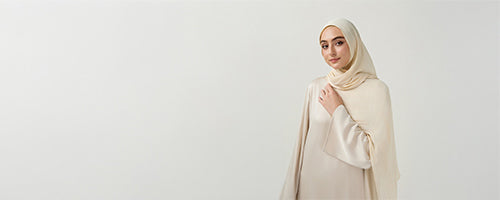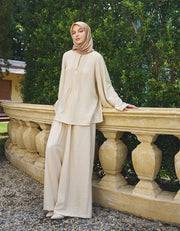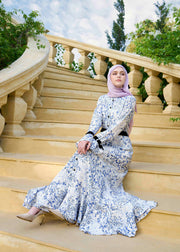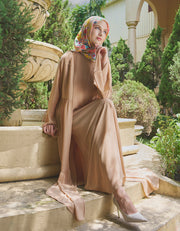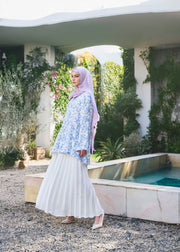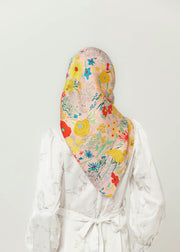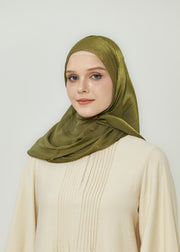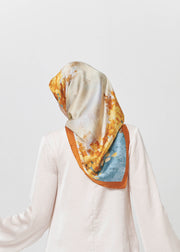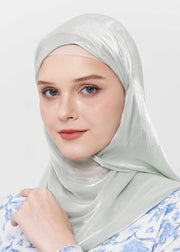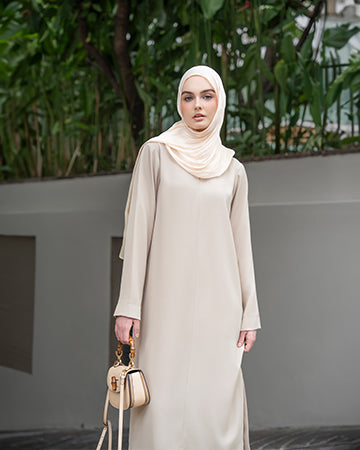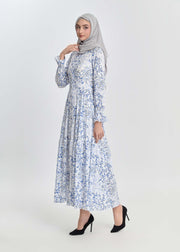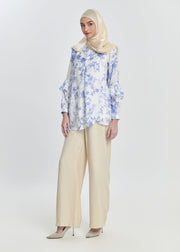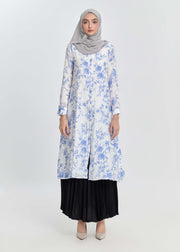From Abaya to Kaftan: Exploring Islamic Dress Types
Understanding the Variety in Islamic Dress
Islamic fashion is far more diverse than many realize. Across different cultures and regions, Muslim women wear various styles of modest clothing that align with both religious principles and cultural identity. Among the most iconic pieces are the abaya, kaftan, jilbab, and khimar—each representing a unique expression of modesty, tradition, and personal style. This guide explores the most popular types of Islamic dress and how each fits into modern wardrobes.
Abaya: The Quintessential Islamic Dress
One of the most widely recognized types of Islamic dress, the abaya is a long, flowing outer garment that typically covers the entire body except the face, hands, and feet. Originating in the Gulf region, the abaya is traditionally black but is now available in a variety of colors and cuts.
Key Features:
-
Full-length, loose-fitting
-
Often worn over other clothes
-
Modern styles include embroidery, open-front versions, or belted options
Abaya: The Quintessential Islamic Dress
Kaftan: The Decorative and Flowing Option
The kaftan is another beloved option among the types of Islamic dress. Originally a traditional robe in many Middle Eastern and North African cultures, kaftans today are popular for both casual and formal wear.
Key Features:
-
Long, robe-like silhouette
-
Often comes in luxurious fabrics like silk or chiffon
-
Embellishments include embroidery, sequins, or metallic threads
Kaftan: The Decorative and Flowing Option
Jilbab: Practical and Modest
The jilbab is a loose-fitting coat or outer garment that fulfills the Islamic requirements for modesty while offering practicality. This style is especially favored in Southeast Asia and parts of the Middle East.
Key Features:
-
Long sleeves and full-body coverage
-
Available in pull-over or open-front designs
-
Commonly made from lightweight, breathable fabrics
Jilbab: Practical and Modest
Khimar: The Modest Cape-Like Head Covering
While technically a head covering, the khimar is often paired with long dresses or abayas to create a cohesive Islamic outfit. It extends over the chest and sometimes down to the waist or even knees.
Key Features:
-
Covers the hair, neck, and upper body
-
Typically worn with long skirts or dresses
-
Comes in one-piece or layered styles
Khimar: The Modest Cape-Like Head Covering
Shalwar Kameez: South Asian Modest Fashion
A staple in countries like Pakistan, India, and Bangladesh, the shalwar kameez is a two-piece set consisting of a tunic (kameez) and loose pants (shalwar). It’s one of the oldest and most functional types of Islamic dress in South Asia.
Key Features:
-
Modest, tailored fit
-
Ideal for layering with hijab or dupatta
-
Offers great variety in prints, fabrics, and tailoring
Shalwar Kameez: South Asian Modest Fashion
Modern Islamic Dresses: Fusion of Modesty and Style
As Islamic fashion evolves, we see a rise in modern interpretations of traditional Islamic dresses. These often incorporate:
-
Western silhouettes like shirt dresses or maxi wraps
-
Contemporary fabrics and patterns
-
Minimalist and elegant cuts designed for modesty
This modern wave allows Muslim women to express faith through fashion while staying on trend.
How to Choose Among the Types of Islamic Dress
When selecting from the many types of Islamic dress, consider the following:
-
Cultural Context: Some styles are rooted in specific regions.
-
Occasion: Opt for more ornate designs for events and simpler ones for daily use.
-
Comfort & Climate: Light fabrics for hot climates, thicker materials for cooler weather.
-
Personal Style: Choose cuts and colors that reflect your identity and confidence.
Conclusion: Embrace the Beauty of Islamic Dress Diversity
The richness of types of Islamic dress reflects the global and multicultural essence of the Muslim community. From the structured elegance of the abaya to the colorful expressiveness of the kaftan, each garment offers a unique blend of modesty and beauty. As the modest fashion industry continues to flourish, Muslim women today have more freedom than ever to dress with faith and style in perfect harmony.
For timeless and elegant Islamic dresses crafted for all seasons and styles, explore the newest collections at Minnaba—where modest fashion meets modern identity.

